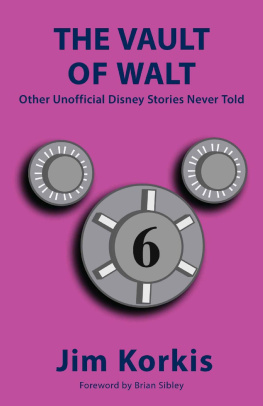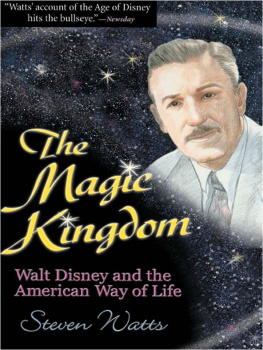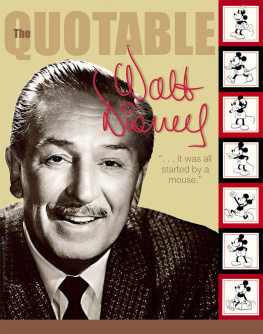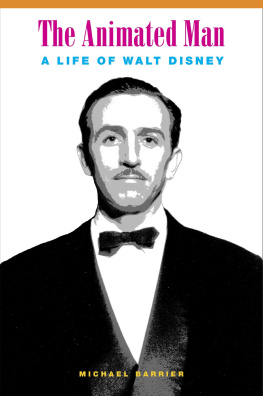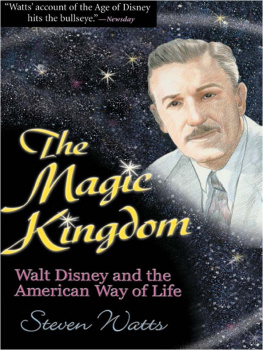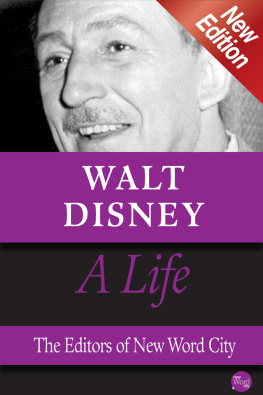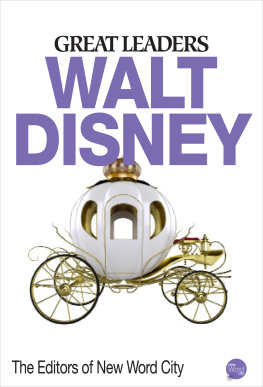
SIMPSON
IMPRINT IN HUMANITIES
The humanities endowment
by Sharon Hanley Simpson and
Barclay Simpson honors
MURIEL CARTER HANLEY
whose intellect and sensitivity
have enriched the many lives
that she has touched.
The publisher gratefully acknowledges the generous contribution to this book provided by the Simpson Humanities Endowment Fund of the University of California Press Foundation.
THE ANIMATED MAN
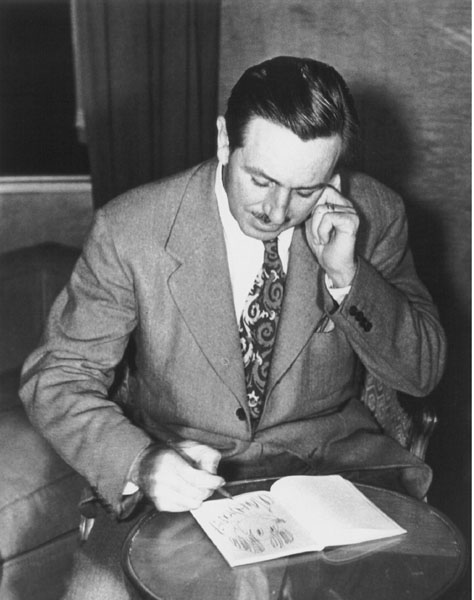
The Animated Man
A LIFE OF WALT DISNEY
MICHAEL BARRIER

Frontispiece. Disney draws Mickey Mouse at a reception at the Savoy Hotel in London in 1946. Quigley Photographic Collection, Walt Disney File, Georgetown University Library, Special Collections Division, Washington, D.C.
University of California Press, one of the most distinguished university presses in the United States, enriches lives around the world by advancing scholarship in the humanities, social sciences, and natural sciences. Its activities are supported by the UC Press Foundation and by philanthropic contributions from individuals and institutions. For more information, visit www.ucpress.edu .
University of California Press
Berkeley and Los Angeles, California
University of California Press, Ltd.
London, England
2007 by Michael Barrier
Library of Congress Cataloging-in-Publication Data
Barrier, J. Michael.
The animated man : a life of Walt Disney / Michael Barrier.
p. cm.
Includes bibliographical references and index.
ISBN: 978-0-520-24117-6 (cloth : alk. paper)
1. Disney, Walt, 19011966. 2. AnimatorsUnited StatesBiography. I. Title.
NC1766.U52D53155 2007
791.43092dc22
[B] 2006025506
Manufactured in the United States of America
16 15 14 13 12 11 10 09 08 07
10 9 8 7 6 5 4 3 2 1
This book is printed on Natures Book, which contains 50% post-consumer waste and meets the minimum requirements of ANSI/NISO Z39.48-1992 (R 1997) (Permanence of Paper).
To my parents
CONTENTS
PREFACE
Anyone who writes a biography of Walt Disney is obliged to explain what he is up to, given that a dozen or more biographies of Disney have already been published. It is not enough to say that most of those books are not very good. The question is whether a new biography can avoid the pitfalls that have doomed the earlier ones.
Most Disney biographies have portrayed either a man who fell short of perfection only in a few venial ways (he smoked way too much and used a great deal of profanity), or one who was personally odious (anti-Semitism being the sin of choice) and the products of whose labors are a stain on American culture.
I have found few signs of either Disney in my own research into his life, which began in 1969 with my first trip to California and interviews with Ward Kimball, one of his best animators, and Carl Stalling, the first composer for his sound cartoons. Disney was, in my reckoning, a stunted but fascinating artist, and a generally admirable but less interesting entrepreneur. The trick, I think, is to wind those strands of his life together, along with a few strands from his private life, in a way that yields something close to the whole man; and that is what I have tried to do in this book.
I have concentrated my attention on his work, his animated films in particular, because that is where I have found his life story most compelling. He was, from all I can tell, a good husband and a devoted father, but he was indistinguishable in those and other respects from a great many men of his generation. The Disneyland park was, and remains, an entrepreneurial marvel, but it was much more a product of its times than Disneys films, and its impact on American culture, for good or ill, has been exaggerated. Thomas Edison and Henry Ford may have transformed their country, but Walt Disney only helped to shape economic and demographic changes that would have occurred without him. It is his animated films of the 1930s and early 1940s that make him uniquely interesting.
My great advantage in writing this book is that I have already written a history of Hollywood animation (Hollywood Cartoons: American Animation in Its Golden Age) that includes a history of Walt Disneys studio in those years. In writing this book, I have been particularly fortunate in being able to draw on the interviews that Milton Gray and I recorded as part of my research for Hollywood Cartoons. Most of the people we interviewed who knew Walt Disneysome of them as long ago as the early 1920swere rarely if ever interviewed otherwise, and almost all of them have since died. No one undertaking a Disney biography now can draw on a richer store of memories of Disney and his studio than the interviews for Hollywood Cartoons. Not all those memories are of equal value, of course, but Disney was a volatile and demanding boss, and his employees had every incentive to observe him closely and remember what they saw and heard.
For this book, I have interviewed a few more people who knew Walt Disney, mostly in connection with his live-action films. Regrettably, most of the people who worked alongside Disney on Disneyland are gone now. Milt Gray and I interviewed some of the parks most important ride designerspeople like Marc Davis, Ken Anderson, Claude Coats, and Herb Rymanbut they worked first on cartoons, and our interviews for Hollywood Cartoons dealt almost entirely with their work in animation. Fortunately, however, there is no shortage of documentation in this area. Disneyland and related subjects, like Walt Disneys passion for railroads, have been the subjects of several well-researched books, notably Walt Disneys Railroad Story, by Michael Broggie, and an occasional memoir. The E Ticket (P. O. Box 8597, Mission Hills CA 91346-8597; www.the-e-ticket.com ), a magazine devoted to Disneylands history founded by Jack E. Janzen and his late brother, Leon J. Janzen, has included a valuable and often unique interview with a Disneyland veteran in almost every issue.
Walt Disney never wrote an autobiography, but he came reasonably close in 1956 when he sat for a series of interviews with Pete Martin, who interviewed celebrities for the Saturday Evening Post and had already ghostwritten books with Arthur Godfrey and Bing Crosby. As Disneys daughter Diane Miller explained in 2001, the original idea was that Disneys ghostwritten autobiography would be serialized in the Post, but he was not interested. Disney suggested instead that they change their concept and have his story told by me, his eldest daughter. My sister and I would be paid for it and, although
Internal evidencelike references to Jean Hersholts death and a forthcoming Disney TV showindicates that the interviews were recorded in May and June 1956 (not July, as Diane Miller remembered). Extensive excerpts from the interviews have been published on the Walt Disney Family Museum Web site and in many Disney-sanctioned books, sometimes in modified or paraphrased form. Copies of the complete transcripts (and the transcript of a 1961 Martin interview with Disney) are held by the Walt Disney Archives in Burbank and as part of the Richard G. Hubler Collection at the Howard Gotlieb Archival Research Center at Boston University. I have quoted from the transcripts rather than their published equivalents, correcting only misspellings and other obvious errors.
Next page


